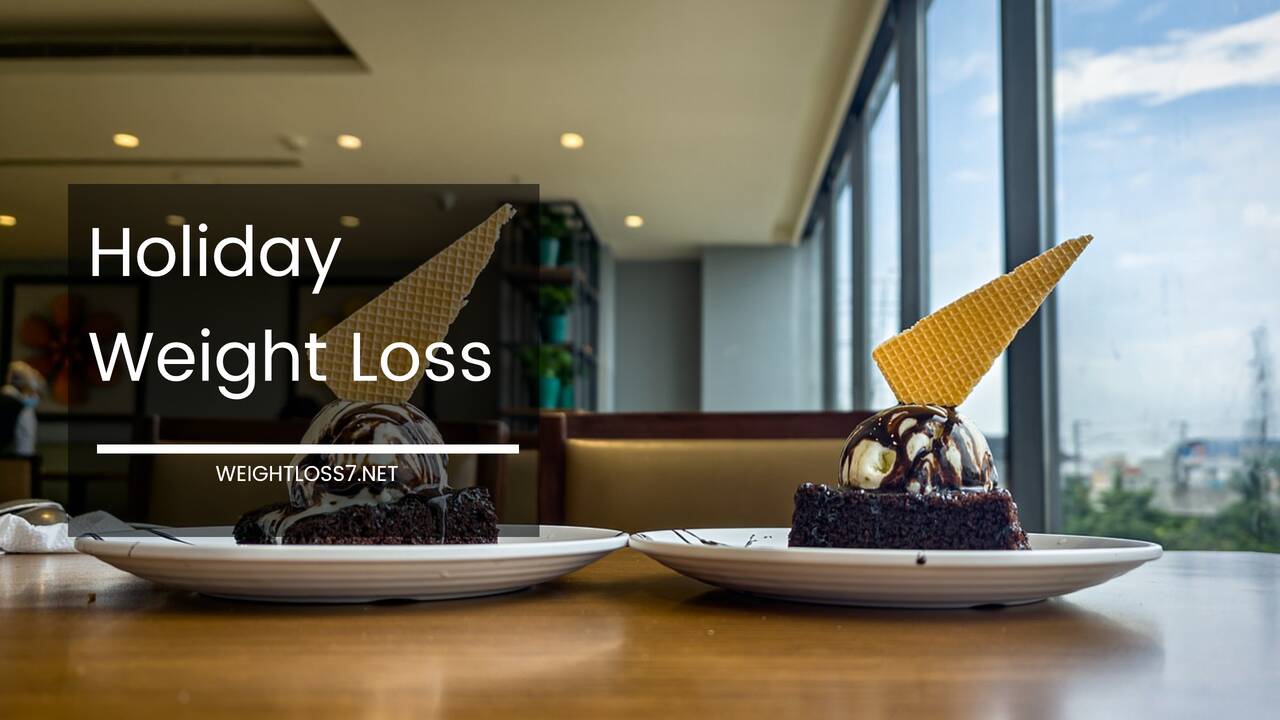How to Lose Weight in 2 Weeks

How to Lose Weight in 2 Weeks
Losing weight quickly, such as in just two weeks, is a goal many people aspire to achieve. While it’s important to approach weight loss with patience and a long-term perspective, there are strategies that can help you shed a few pounds in a short period of time, provided you do so in a safe and sustainable manner.
In this comprehensive guide, we will explore effective methods to help you lose weight in 2 weeks while prioritizing your health and well-being.
Set Realistic Goals
Before diving into any weight loss program, it’s crucial to set realistic and achievable goals. Aim to lose 1-2 pounds per week, which is considered a safe and sustainable rate of weight loss.
While losing more weight in two weeks is possible, it may not be healthy or maintainable in the long run.
Create a Calorie Deficit
To lose weight, you need to create a calorie deficit by burning more calories than you consume. A safe deficit is typically around 500-1000 calories per day, which can result in a weight loss of 1-2 pounds per week.
Keep in mind that you shouldn’t consume fewer calories than your body needs to function properly.
Follow a Balanced Diet
Focus on consuming whole, nutrient-dense foods while reducing your intake of processed and high-calorie items. A balanced diet should include:
- Lean proteins: Chicken, turkey, fish, tofu, and legumes.
- Complex carbohydrates: Whole grains, fruits, and vegetables.
- Healthy fats: Avocado, nuts, seeds, and olive oil.
- Plenty of water: Stay hydrated to support your metabolism and overall health.
- Limit sugar and refined carbohydrates: Minimize sugary drinks, sweets, and white bread.
Practice Portion Control
Even healthy foods can lead to weight gain if consumed in excessive quantities. Be mindful of portion sizes and use tools like measuring cups to help control your calorie intake.
Eating smaller, more frequent meals can also help control hunger and prevent overeating.
Track Your Calories
Consider using a food diary or a mobile app to track your daily calorie intake. This can help you stay accountable and make informed food choices. Many apps also provide nutritional information, making it easier to balance your diet.
Incorporate Regular Exercise
Exercise is a crucial component of any weight loss plan. Aim for a combination of cardiovascular exercise (such as walking, jogging, or cycling) and strength training (using weights or bodyweight exercises) to maximize calorie burn and maintain muscle mass. A 30-minute daily workout can be a good starting point.
High-Intensity Interval Training (HIIT)
HIIT is a highly effective exercise method for burning calories and fat in a short amount of time. It involves short bursts of intense exercise followed by brief periods of rest or low-intensity activity.
HIIT workouts can help boost your metabolism and improve cardiovascular fitness.
Stay Active Throughout the Day
In addition to scheduled workouts, try to stay active throughout the day. Incorporate more movement into your daily routine, such as taking the stairs instead of the elevator, walking during breaks, or doing light stretches at your desk.
Get Plenty of Sleep
Adequate sleep is essential for weight loss and overall health. Poor sleep can disrupt hormones that regulate appetite and lead to overeating. Aim for 7-9 hours of quality sleep per night to support your weight loss efforts.
Manage Stress
Chronic stress can lead to weight gain and poor dietary choices. Practice stress-reduction techniques such as mindfulness meditation, deep breathing exercises, or yoga to help manage stress and emotional eating.
Limit Alcohol and Sugary Beverages
Alcoholic beverages and sugary drinks are often high in calories and can hinder weight loss progress. Reduce your consumption of these beverages and opt for water, herbal tea, or sparkling water as healthier alternatives.
Stay Hydrated
Drinking enough water is crucial for overall health and can help control appetite. Sometimes, thirst is mistaken for hunger. Aim to drink at least 8-10 glasses of water per day, or more if you’re physically active.
Include Fiber in Your Diet
Fiber-rich foods like fruits, vegetables, and whole grains can help you feel full and satisfied, reducing the likelihood of overeating. Aim to include these foods in your meals and snacks.
Avoid Late-Night Snacking
Late-night snacking can contribute to weight gain since your body’s metabolism tends to slow down in the evening. Try to finish your last meal at least 2-3 hours before bedtime and avoid mindless snacking in front of the TV.
Monitor Your Progress
Keep track of your weight loss progress by regularly weighing yourself and taking measurements.
However, remember that weight can fluctuate daily due to factors like water retention, so focus on the overall trend rather than daily fluctuations.
Seek Support
Weight loss can be challenging, and having a support system can make a significant difference. Consider joining a weight loss group, working with a personal trainer, or enlisting the help of a registered dietitian.
Be Patient and Persistent
Rapid weight loss in two weeks can be achieved, but it’s essential to stay patient and persistent.
Understand that there will be ups and downs, and setbacks are a natural part of the journey. Stay committed to your goals and make adjustments as needed.
Avoid Fad Diets
While there are many fad diets promising rapid weight loss, they often lack essential nutrients and can be harmful in the long run. Stick to a balanced and sustainable approach to ensure your overall health is maintained.
Consider Professional Guidance
If you have specific health concerns or underlying medical conditions, consider seeking guidance from a healthcare professional or registered dietitian who can provide personalized advice and supervision.
After the Two Weeks
Once you’ve achieved your two-week weight loss goal, it’s essential to transition into a more sustainable and balanced eating and exercise plan to maintain your progress.
Gradually increase your calorie intake while continuing to prioritize nutritious foods and regular physical activity.
Understand the Science of Weight Loss
To embark on a successful weight loss journey, it’s essential to have a basic understanding of the science behind it.
Weight loss occurs when you create a calorie deficit, meaning you burn more calories than you consume. Each pound of body weight is roughly equivalent to 3,500 calories.
Therefore, to lose one pound, you need to create a calorie deficit of 3,500 calories through a combination of reduced calorie intake and increased physical activity.
The Role of Diet
Diet plays a central role in weight loss. As mentioned earlier, a calorie deficit is necessary for shedding pounds. However, not all calories are created equal. To maximize your success, focus on the quality of the calories you consume.
- Protein: Include sources of lean protein in your diet, such as chicken, turkey, fish, tofu, and legumes. Protein helps you feel full and supports muscle maintenance during weight loss.
- Carbohydrates: Opt for complex carbohydrates like whole grains, fruits, and vegetables. They provide sustained energy and fiber, which aids in satiety.
- Fats: Choose healthy fats like those found in avocados, nuts, seeds, and olive oil. These fats are essential for overall health and can help control hunger.
- Sugar and Refined Carbohydrates: Minimize your intake of sugary foods and beverages, as well as highly processed and refined carbohydrates. These can lead to rapid spikes and crashes in blood sugar levels, triggering cravings and overeating.
Meal Planning and Preparation
Effective meal planning and preparation can be the key to maintaining a healthy diet. By planning your meals in advance and cooking at home, you have better control over the ingredients and portion sizes. Consider these tips:
- Plan your meals and snacks for the week, taking into account your calorie goals and nutritional needs.
- Create a shopping list to ensure you have the necessary ingredients on hand.
- Cook in batches and freeze individual portions for easy access to healthy meals when you’re short on time.
- Experiment with new recipes and cooking methods to keep your meals interesting and enjoyable.
- Use smaller plates and bowls to help with portion control.
The Importance of Physical Activity
While diet is crucial for weight loss, physical activity is equally important. Exercise helps you burn calories, increase your metabolism, and build lean muscle mass. Here are some tips for incorporating physical activity into your routine:
- Choose activities you enjoy to make exercise a sustainable habit. This could be anything from dancing to hiking to swimming.
- Aim for a combination of cardiovascular exercise (such as walking, jogging, or cycling) and strength training (using weights or bodyweight exercises). Cardio burns calories, while strength training helps you build muscle, which can increase your resting metabolic rate.
- Gradually increase the intensity and duration of your workouts to avoid plateaus and continue making progress.
- Include flexibility and mobility exercises to improve your range of motion and prevent injuries.
HIIT Workouts
High-Intensity Interval Training (HIIT) is a workout method that has gained popularity for its efficiency in burning calories and fat. In a typical HIIT workout, you perform short bursts of intense exercise followed by brief periods of rest or low-intensity activity. This cycle is repeated for a set duration.
The high-intensity intervals push your body to work at its maximum capacity, which can lead to increased calorie burn both during and after the workout. HIIT workouts are known for their time efficiency and can be completed in as little as 20-30 minutes.
Here’s a sample HIIT workout:
- Warm up for 5 minutes with light cardio (e.g., jogging in place or jumping jacks).
- Perform 20 seconds of high-intensity exercise (e.g., sprinting or burpees).
- Follow with 10 seconds of rest or low-intensity exercise (e.g., walking in place).
- Repeat the cycle for 15-20 minutes.
- Cool down with 5 minutes of stretching.
Staying Active Throughout the Day
Incorporating more movement into your daily life can complement your structured workouts. Here are some tips for staying active throughout the day:
- Take short breaks to stand up, stretch, and walk around if you have a desk job.
- Opt for the stairs instead of the elevator whenever possible.
- Walk or bike for short errands instead of driving.
- Use a standing desk or a stability ball chair to engage your muscles while working.
- Find ways to make household chores more active, like dancing while you clean or gardening.
The Role of Sleep
Adequate sleep is often overlooked but is crucial for weight loss and overall health. Poor sleep can disrupt the hormones that regulate appetite, leading to increased hunger and cravings for high-calorie foods.
Lack of sleep can also reduce your energy levels, making it harder to stay active. Here’s how to prioritize sleep:
- Aim for 7-9 hours of quality sleep per night.
- Create a relaxing bedtime routine to signal to your body that it’s time to wind down.
- Keep your bedroom dark, quiet, and at a comfortable temperature.
- Limit screen time before bed, as the blue light from devices can interfere with your sleep-wake cycle.
The Impact of Stress
Chronic stress can have a significant impact on weight gain and unhealthy eating habits.
When stressed, your body releases hormones like cortisol, which can increase appetite and lead to emotional eating. To manage stress effectively:
- Practice stress-reduction techniques such as mindfulness meditation, deep breathing exercises, or yoga.
- Engage in hobbies and activities that bring you joy and relaxation.
- Prioritize self-care and take breaks when needed.
The Role of Alcohol and Sugary Beverages
Alcoholic beverages and sugary drinks are often calorie-dense and can contribute to weight gain. To reduce their impact on your weight loss efforts:
- Limit alcohol consumption or choose lower-calorie options.
- Replace sugary drinks with water, herbal tea, or sparkling water.
- Be mindful of the calorie content of mixed drinks and cocktails.
The Importance of Hydration
Proper hydration is essential for overall health and can support your weight loss goals. Sometimes, thirst is mistaken for hunger, leading to unnecessary calorie consumption. Here’s how to stay hydrated:
- Aim to drink at least 8-10 glasses (64-80 ounces) of water per day, or more if you’re physically active.
- Carry a reusable water bottle with you to remind yourself to drink throughout the day.
- Include hydrating foods in your diet, such as water-rich fruits and vegetables like watermelon, cucumber, and oranges.
The Role of Fiber
Fiber is a dietary component that offers several benefits for weight loss. It adds bulk to your meals, helping you feel full and satisfied, which can reduce overall calorie intake.
Additionally, fiber aids in digestion and supports a healthy gut microbiome. Here’s how to include more fiber in your diet:
- Choose whole grains like brown rice, quinoa, and whole wheat pasta.
- Incorporate plenty of fruits and vegetables into your meals and snacks.
- Opt for beans, lentils, and legumes as sources of plant-based protein and fiber.
Late-Night Snacking and Weight Loss
Late-night snacking can be a common obstacle to weight loss because your body’s metabolism tends to slow down in the evening. To avoid unnecessary calorie consumption before bedtime:
- Finish your last meal at least 2-3 hours before going to bed.
- If you feel hungry in the evening, choose a light and healthy snack, such as a small serving of yogurt or a piece of fruit.
- Avoid mindless snacking while watching TV or using electronic devices, as this can lead to overeating.
Monitoring Your Progress
Tracking your weight loss progress is a valuable tool for staying motivated and making necessary adjustments to your plan. Here’s how to effectively monitor your progress:
- Weigh yourself regularly, ideally at the same time of day and under the same conditions (e.g., in the morning, after using the restroom, and before eating or drinking).
- Take measurements of your waist, hips, and other key areas to track changes in your body composition.
- Keep a food diary or use a mobile app to log your daily calorie intake and exercise routines.
- Consider using a fitness tracker or smartwatch to monitor your physical activity and calorie expenditure.
Seeking Support
Weight loss can be a challenging journey, and having a support system can make a significant difference in your success. Here are some ways to seek support:
- Join a weight loss group or community, either in-person or online, to connect with others who share similar goals and challenges.
- Consider working with a personal trainer who can design a customized exercise program and provide guidance on proper form and technique.
- Consult with a registered dietitian who can create a personalized meal plan and offer expert advice on nutrition and weight management.
Being Patient and Persistent
Rapid weight loss in two weeks is an ambitious goal, and it’s important to approach it with patience and persistence.
Understand that there will be ups and downs along the way, and setbacks are a natural part of the journey. Here are some strategies to help you stay committed:
- Focus on your long-term health and well-being, rather than quick fixes or short-term results.
- Celebrate small victories and non-scale successes, such as increased energy, improved mood, or better sleep.
- Stay adaptable and be willing to make adjustments to your plan based on your progress and feedback from your body.
Avoiding Fad Diets
The weight loss industry is flooded with fad diets promising rapid results, but many of these diets are not sustainable or healthy in the long run. Instead, focus on a balanced and sustainable approach to weight loss.
Here’s why avoiding fad diets is essential:
- Fad diets often eliminate entire food groups or severely restrict calorie intake, leading to nutrient deficiencies and potential health risks.
- Rapid weight loss from extreme diets is often due to water loss, not fat loss, and can result in muscle loss.
- Many fad diets are not designed for long-term success and can lead to weight regain once you return to normal eating patterns.
Professional Guidance
If you have specific health concerns or underlying medical conditions, it’s crucial to seek professional guidance before beginning any weight loss program.
A healthcare professional or registered dietitian can provide personalized advice and supervision to ensure your safety and success.
After the Two Weeks
Once you’ve achieved your two-week weight loss goal, it’s essential to transition into a more sustainable and balanced eating and exercise plan to maintain your progress. Here’s how to continue on your weight loss journey:
- Gradually increase your calorie intake to a level that supports your long-term goals and prevents excessive weight loss.
- Focus on maintaining a balanced and nutritious diet that includes a variety of foods from all food groups.
- Keep up with regular physical activity to support your overall health and fitness.
- Consider setting new goals, whether they’re related to fitness, strength, or other aspects of wellness.
- Continue to monitor your progress and make adjustments as needed to stay on track.
Final Remarks
Losing weight in just two weeks is a challenging but achievable goal if done safely and responsibly.
It involves creating a calorie deficit through a combination of diet and exercise while maintaining a balanced and nutrient-rich eating plan.
Remember that rapid weight loss should be seen as a short-term solution, and long-term health and fitness goals should focus on sustainable practices that prioritize overall well-being.
Always consult with a healthcare professional before beginning any new weight loss program to ensure it is safe and appropriate for your individual needs.
By following the guidelines outlined in this comprehensive guide, you can embark on a successful and healthy weight loss journey.
Disclaimer: Rapid weight loss may not be suitable for everyone, and it’s essential to consult with a healthcare professional before embarking on any new diet or exercise plan, especially if you have underlying health conditions. The methods discussed in this article should be seen as short-term solutions and not as a long-term lifestyle.

















